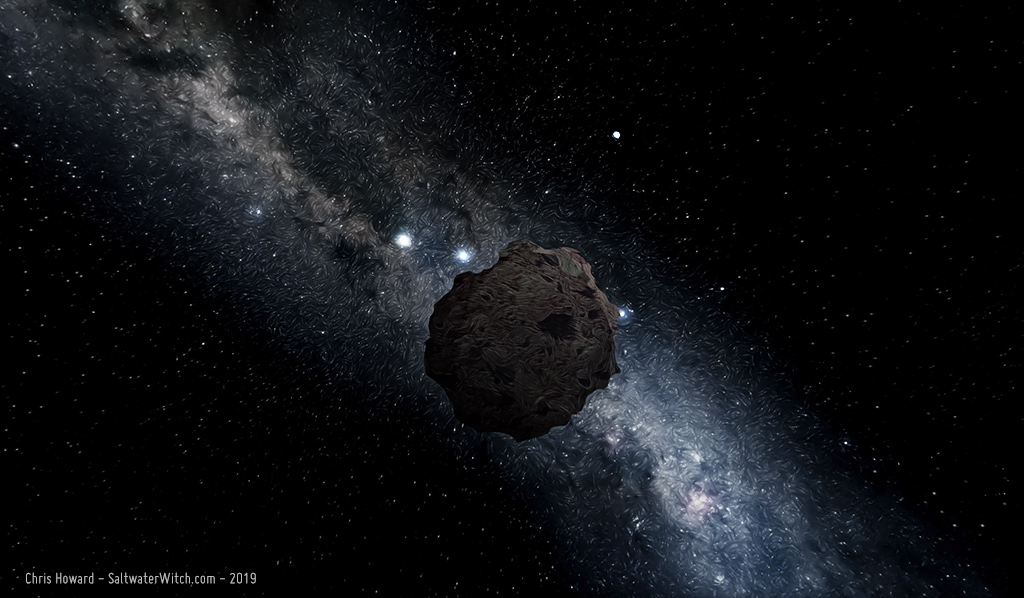Swan Nebula (M17)
The Swan Nebula (M17) in Hydrogen-alpha (16 x 5 minute exposures with the WilliamOptics ZS61 and Atik414EX mono CCD camera). Reprocessing a set of frames I shot almost a year ago. You can really see the swan in this shot. Messier 17 is also called the Omega Nebula, but I see a swan, and I don't see an Ω. Not really, maybe that loop at the top, the swan's arched neck?
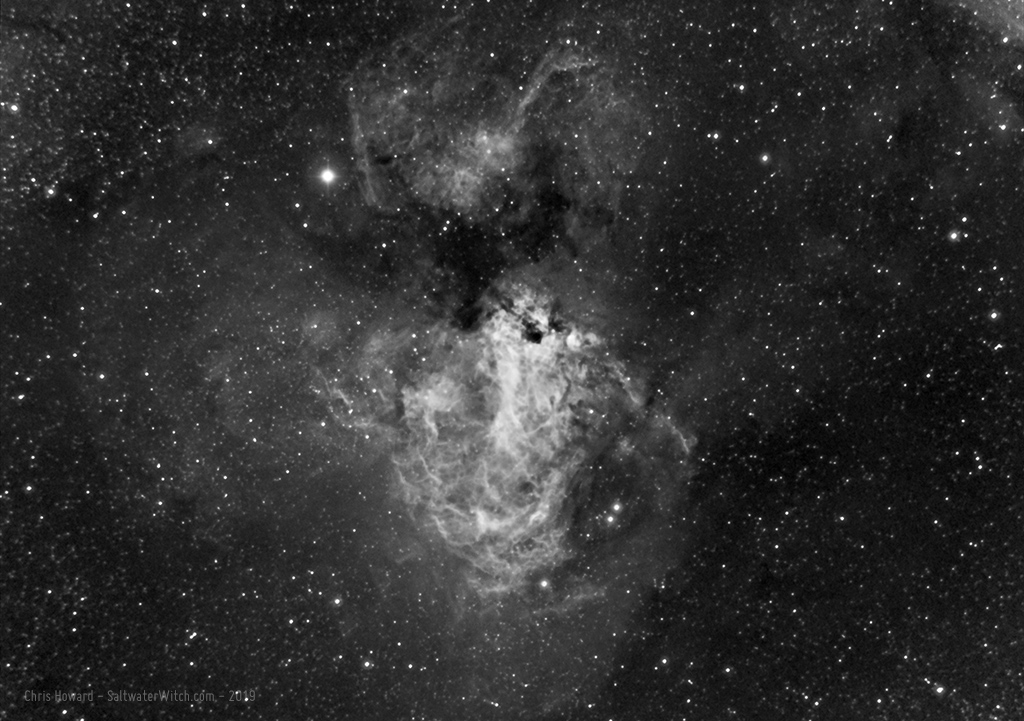
Posted May 14, 2019
AstroTrackerHD Prototype 4
AstroTrackerHD Prototype 4 in testing, with pics. (HD = harmonic drive, which is a high-precision, high-torque, zero backlash gear set. See: https://youtu.be/3mWemlMEzFk). I did some code cleanup and refactoring for version 4.0.7, and added the ability to adjust the speed in small increments and save the speed values to eeprom. I have a couple posts on this earlier in the year, but if you haven't seen them: AstroTrackerHD is my project to build a very accurate star tracker using a NEMA 17 stepper, 139:1 ratio planetary gear feeding a 100:1 ratio harmonic drive. I'm running updated software in this one, and I'm in the process of 3D printing some brackets for the stepper.
![]()
![]()
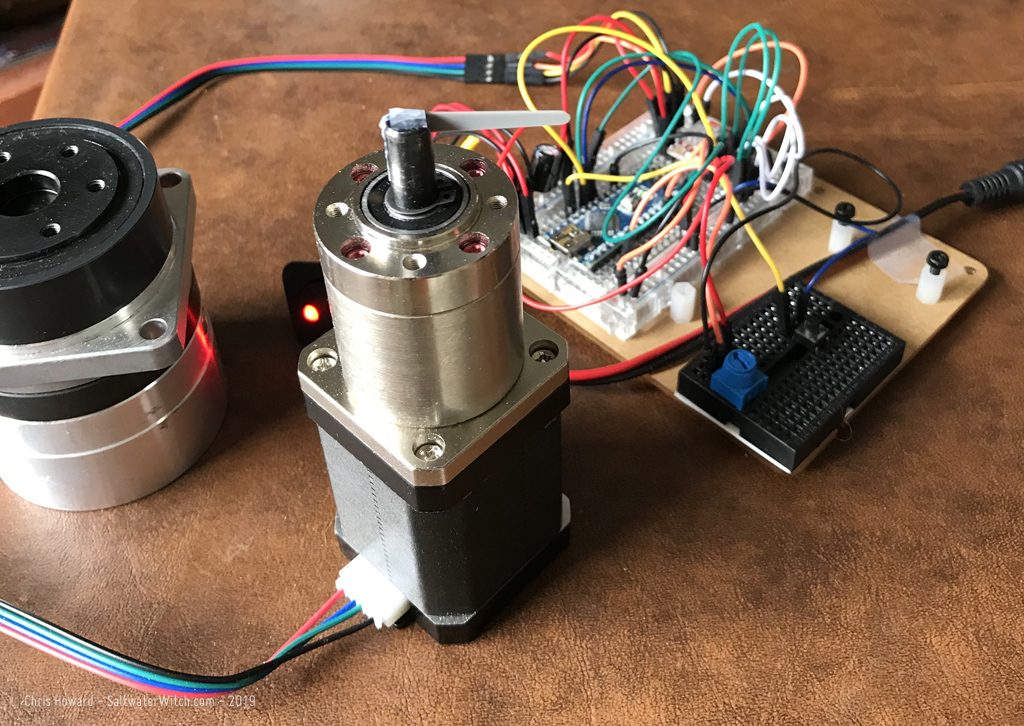
![]()
Posted May 4, 2019
Lunar Photography
There’s a beautiful moon out tonight. I shot this with the Nikon D750 + AstroTech AT6RC 1350mm f/9. A nearly full moon always makes deep sky astrophotography difficult, but that’s when you pair a full frame DSLR with a 6" Ritchey-Chrétien. The rest of the sky can wait for the new moon.

Posted April 17, 2019
Testing my portable narrowband astro setup
In the field--well, not really, but I was a little under a 100 miles away in western Massachusetts testing out the portable narrowband setup with my William Optics GT81 APO refractor, Moonlite automated focuser, ZWO ASI1600MM-Pro Mono camera, iOptron CEM25P mount. It snowed and was cloudy the rest of the time, but I did have a chance to really test out the setup away from the house, and it all worked beautifully. Unfortunately I also forgot to take my Macbook Pro, but ended up running everything from my iPhone using Jump Desktop to remote into the astro system. The weather didn't cooperate, but so what? We had such a fun time down at Lisa and Neil's place this weekend, and just to prove there was at least a little astronomy stuff going on, here's a pic of my setup running in the library.
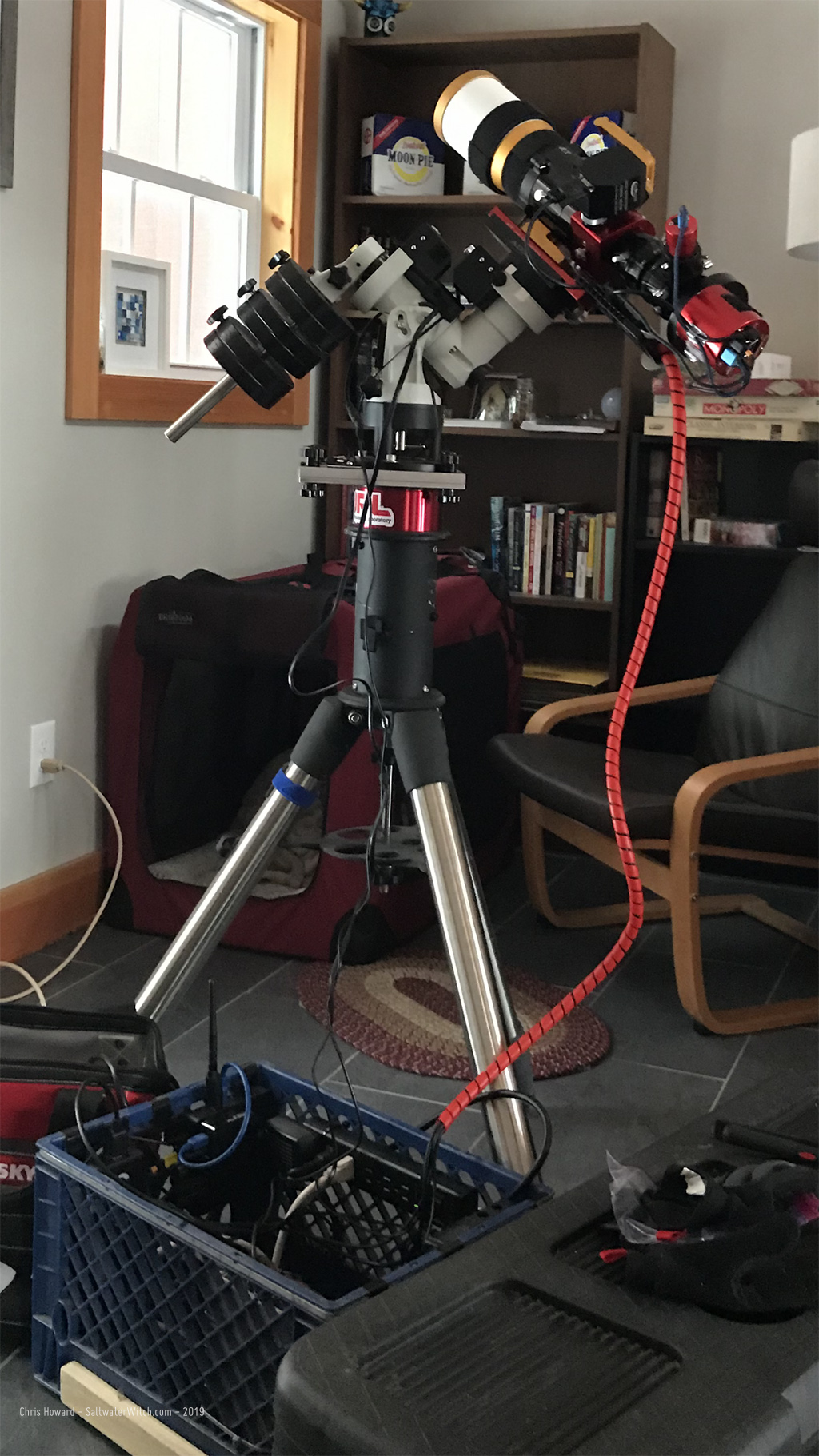
Posted March 3, 2019
NGC 2174 in the Hubble Palette and Bi-color HO
NGC 2174, the Monkey Head Nebula. I went with the Hubble Palette, SHO, on this one. Exposures: 24 x 120 seconds Ha, 26 x 120 seconds OIII, 24 x 120 seconds SII. Equipment: William Optics GT81 APO refractor, ZWO ASI1600MM-Pro monochrome 16MP camera (unity gain 139/21), Astronomik filters, iOptron CEM25P mount, INDI/Ekos/KStars control software. NGC 2174 is a faint emission nebula located in the constellation Orion, about 6400 light-years away. This was a test of my field setup that I'll taking on the road in a week. I'll have to come back to NGC 2174 with longer exposures--and more of them. And dark frames. I didn't shoot any calibration frames in this run.

Here's my processing of NGC 2174 in Hydrogen-alpha and Oxygen (without the Sulfur frames).

Posted February 22, 2019
Astro Setup - Feb 19, 2019
Tonight's setup: William Optics GT81, Moonlite Focuser, ZWO ASI1600MM-Pro, ASI 120MM. This is my narrowband setup, and tonight it's all about the focuser.

Posted February 19, 2019
Gathering data...
I finished the night of Feb 9th with a small batch of frames to process--really only enough for this bi-color Ha-OIII of the Rosette. I also shot some Ha frames of IC 443, the Jellyfish supernova remnant. Both are looking okay, but I need more data. And the weather doesn't look like it's going to cooperate until the weekend--snow and rain. (I was also playing with the old WO 200mm guide scope with this session, and it went well--Total RMS" in the .60s and .70s most of the time. RMS is the Root Mean Square in arcseconds, the standard deviation of the accumulated star movements over a particular guiding session. Lower is better). Exposures: 28 x 240 seconds of Ha, 26 x 240 seconds of OIII. Equipment: William Optics GT81 APO refractor, ZWO ASI1600MM-Pro monochrome 16MP camera (unity gain 139/21), Astronomik filters, iOptron CEM25P mount, INDI/Ekos/KStars running in Stellarmate/Raspberry Pi 3b+
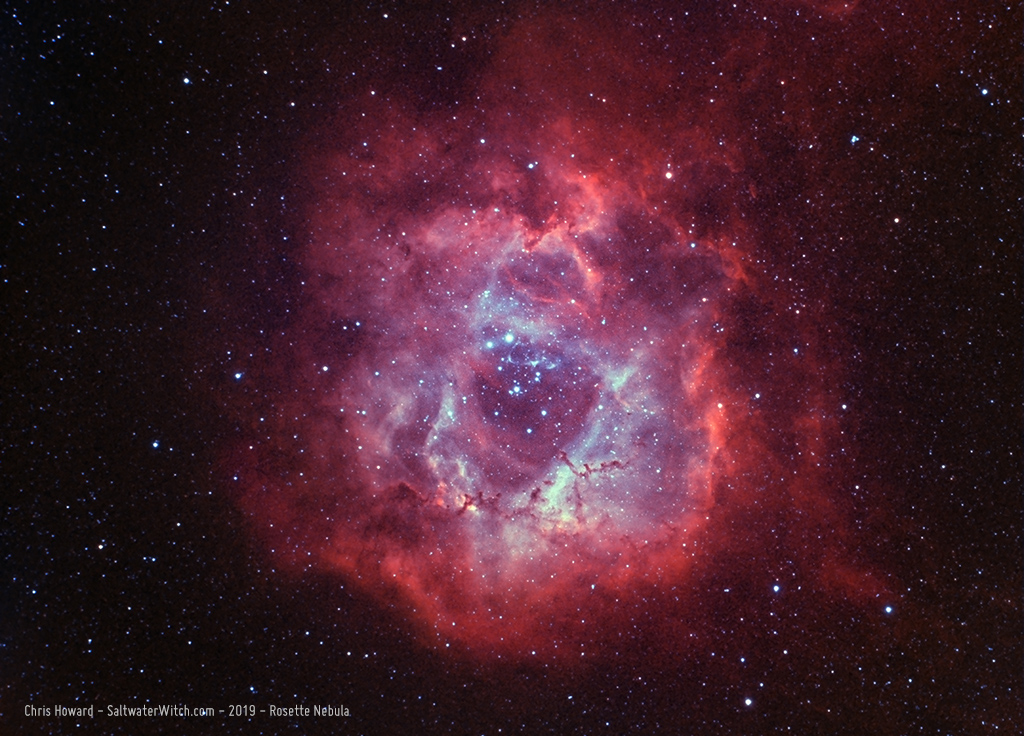
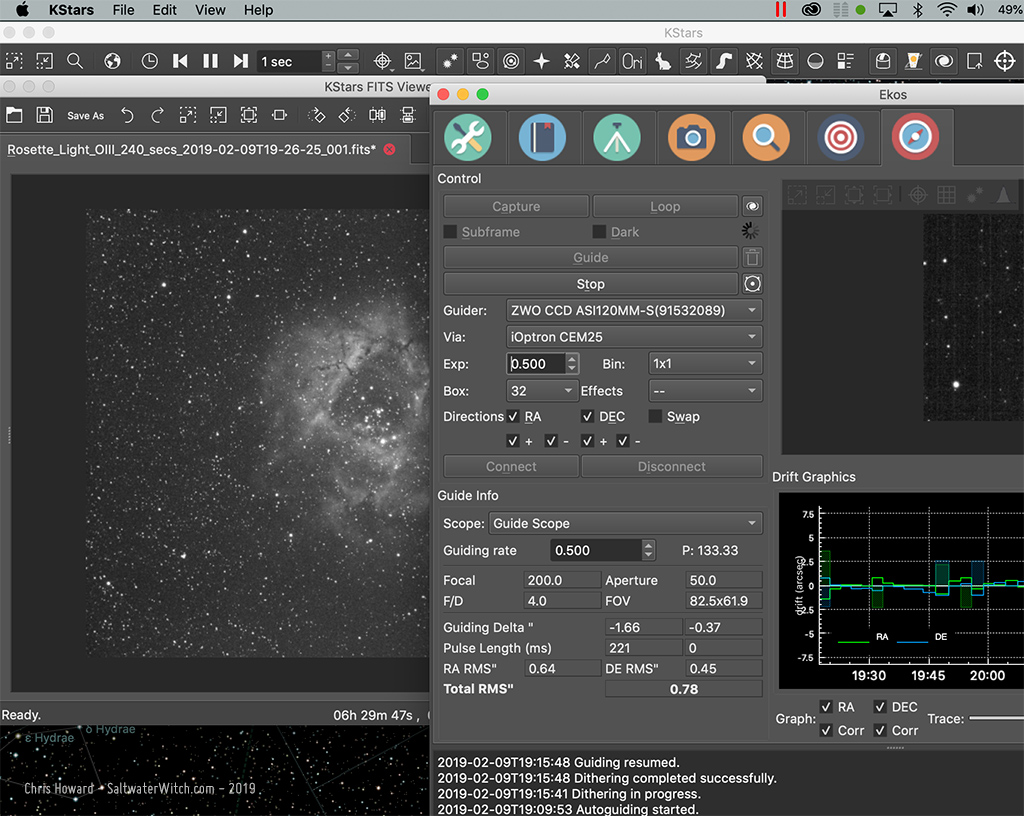
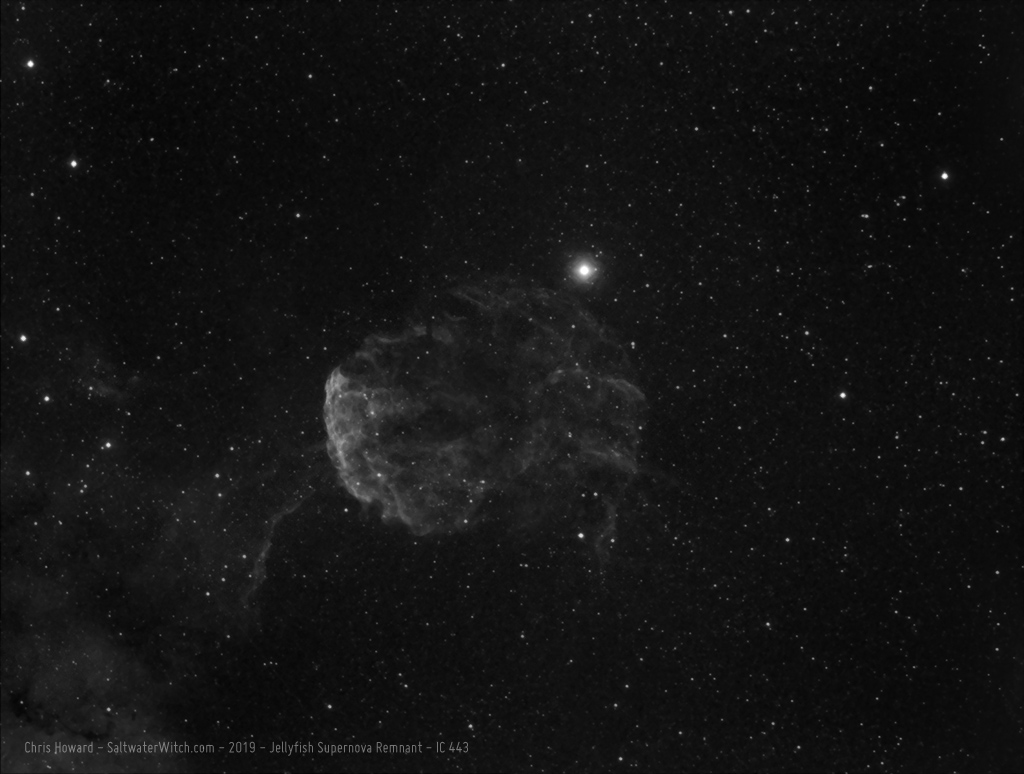
Setup for the night:
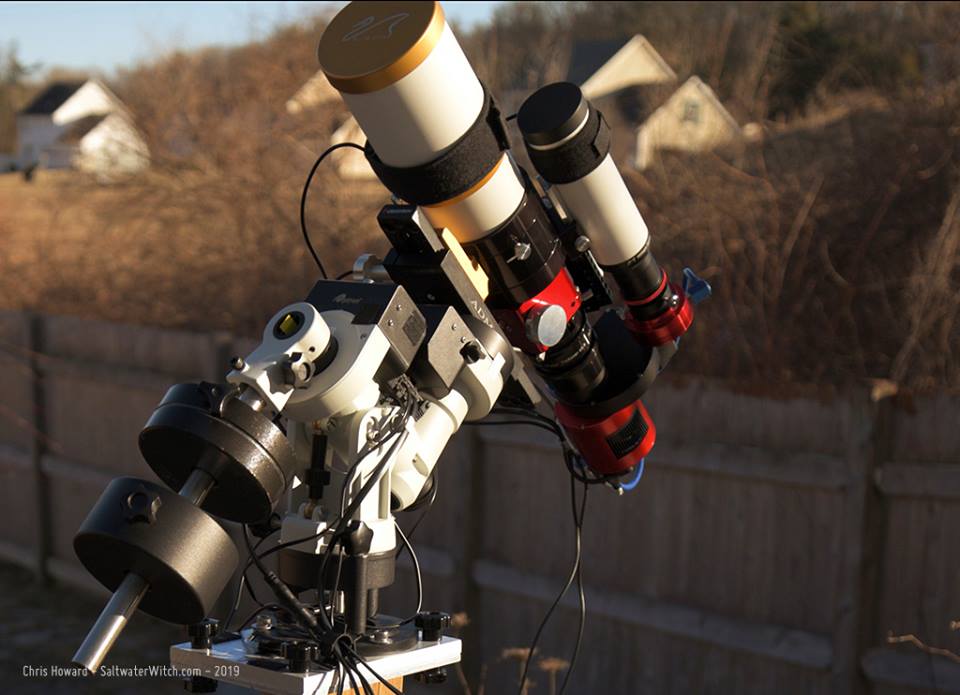
Posted February 13, 2019
Use your backyard astro gear to detect objects at the edge of the solar system!
Well, maybe. Astronomers in Japan discovered a new Kuiper belt object (KBO), a rock with a 1.3km radius at the edge of our Solar System. That's more than 7.1 billion km, 4.4 billion miles away. What makes this story particularly remarkable is the equipment used to make the discovery, a pair of Celestron 11" RASA astrographs--basically something I can purchase from many astronomy equipment vendors. That's what is so amazing. Equipment powerful enough to detect 1.3 kilometer-sized chunks of rock at the edge of our solar system is easily available to amateur astronomers. This is my "artist's rendering", with the rock occulting a bright background star, which is the method used by the astronomers to detect it. Here's the article in Nature Astronomy: https://www.nature.com/
